Abstract
Four sources of electrical noise in biological membranes, each with a different physical basis, are discussed; the analysis of each type of noise potentially yields a different sort of information about membrane properties. (a) From the thermal noise spectrum, the passive membrane impedance may be obtained, so that thermal noise measurements are essentially equivalent to the type of since wave analysis carried out by Cole and Curtis. (b) If adequately high frequency measurements could be made, the shot noise spectrum should give information about the average motion of a single ion within the membrane. (c) The number of charge carriers and single ion mobilities within the membrane can possibly be inferred from measurements of noise with a 1/f spectrum. Available data indicate, for example, that increases in axon membrane conductance are not achieved by modulations in the mobility of ions within the membrane. (d) Fluctuations arising from the mechanisms normally responsible for membrane conductance changes can produce a type of electrical noise. Analysis of such conductance fluctuations provides a way to assess the validity of various microscopic models for the behavior of individual channels. Two different probabilistic interpretations of the Hodgkin-Huxley equations are investigated here and shown to yield different predictions about the spectrum of conductance fluctuations; thus, appropriate noise measurements may serve to eliminate certain classes of microscopic models for membrane conductance changes. Further, it is shown how the analysis of conductance fluctuations can, in some circumstances, provide an estimate of the conductance of a single channel.
Full text
PDF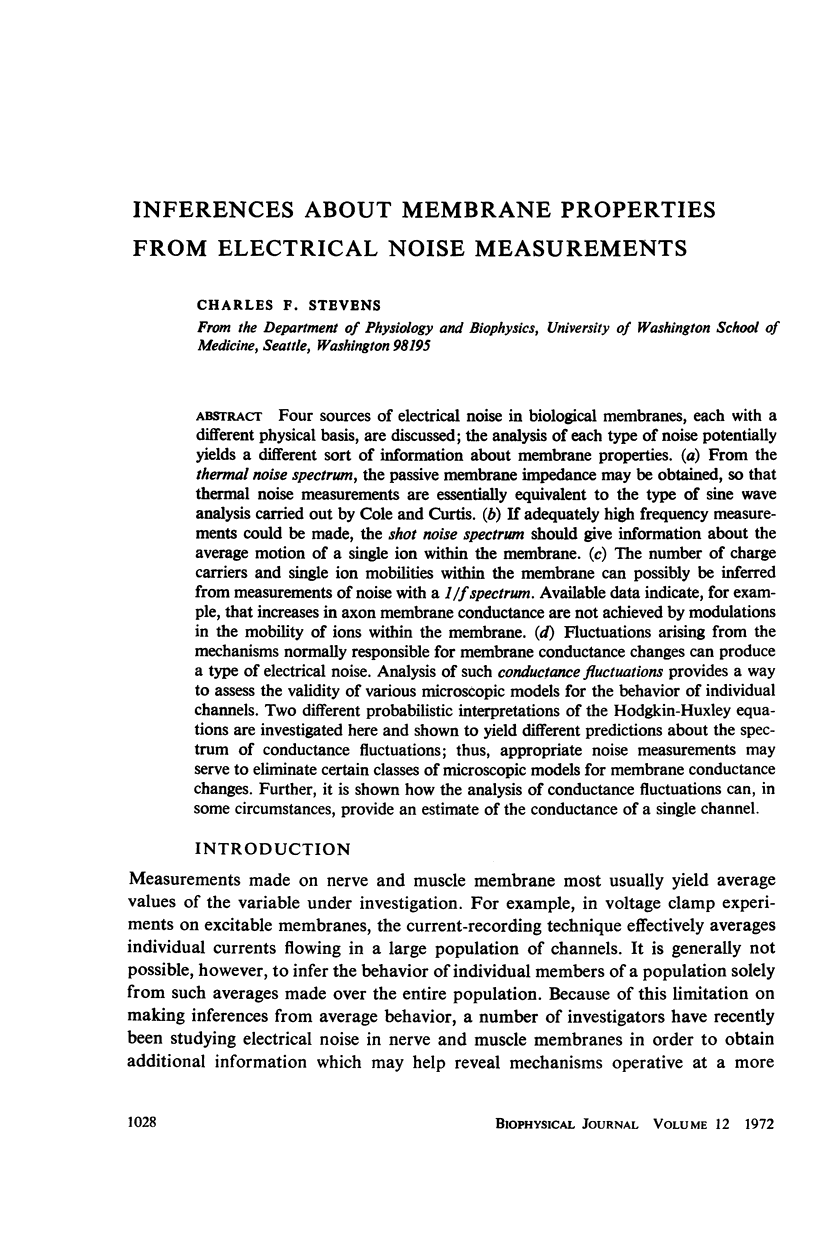
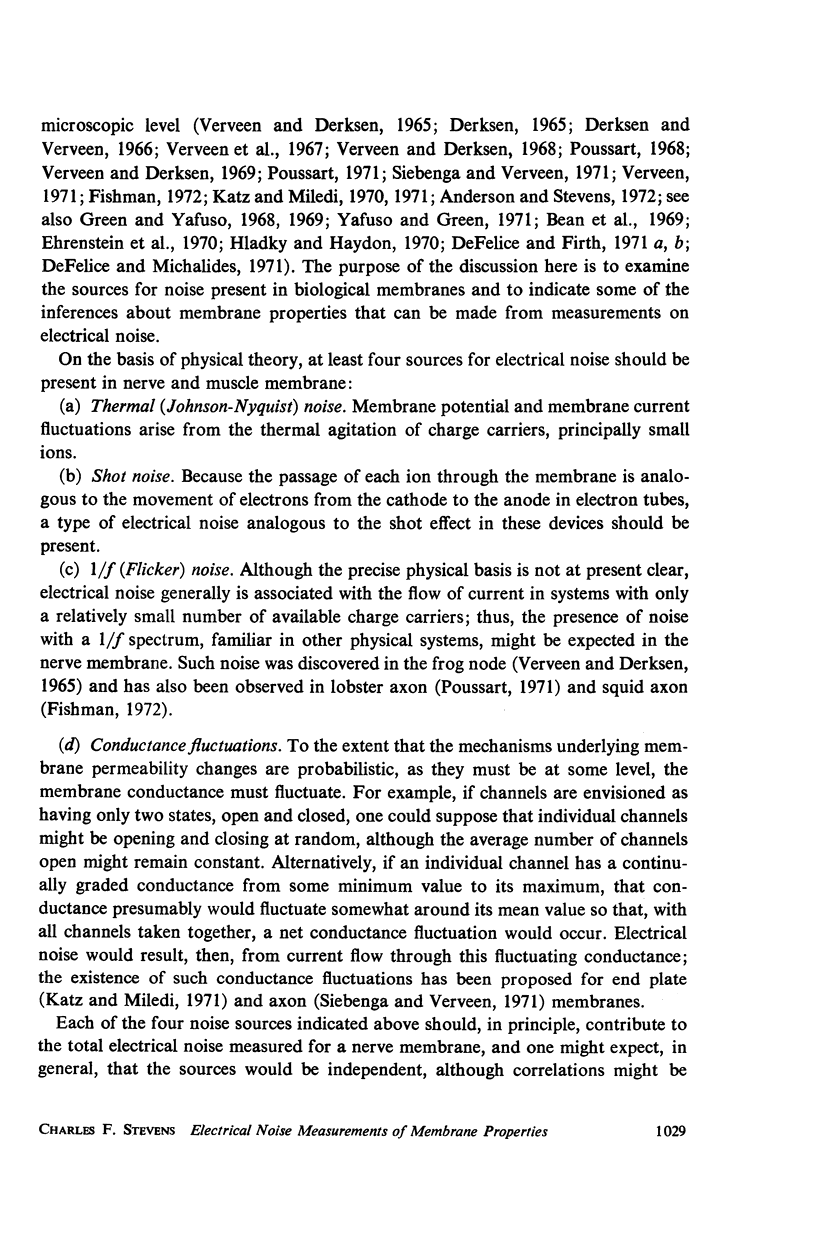
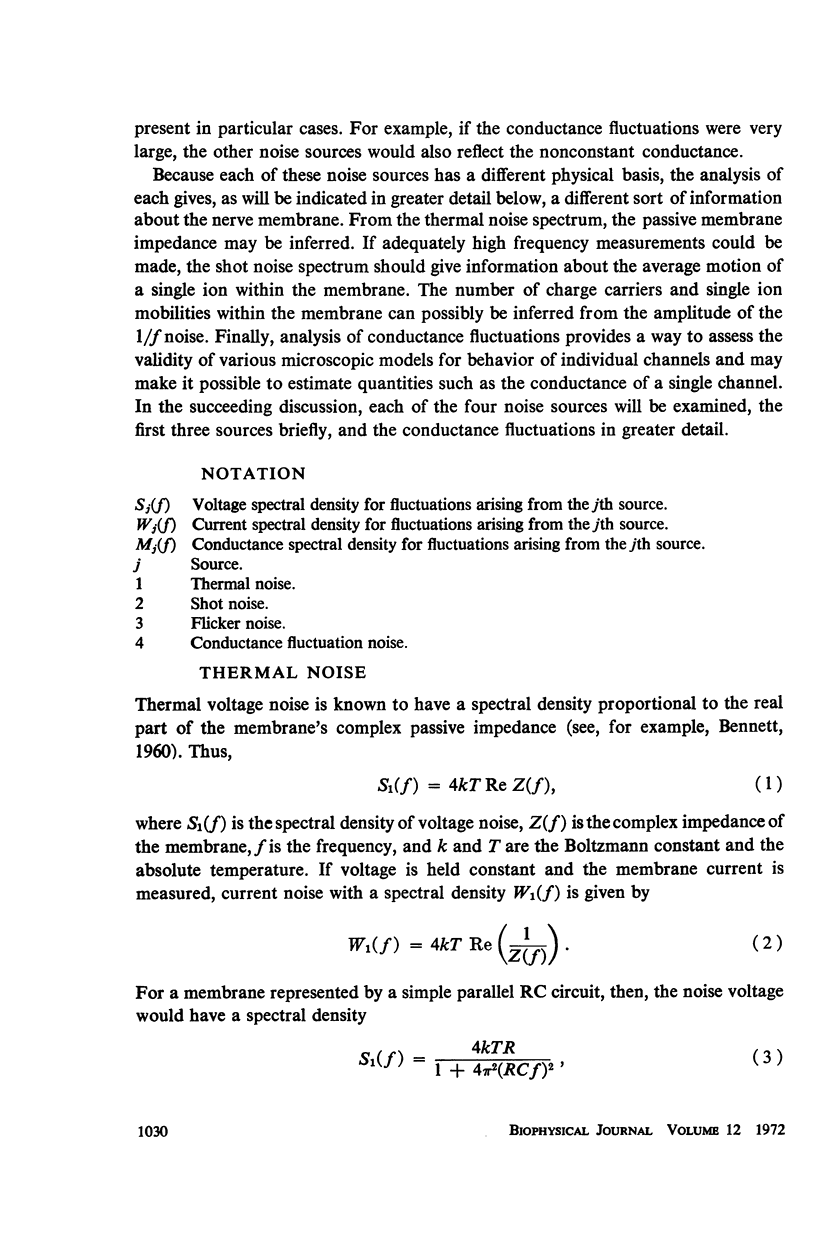
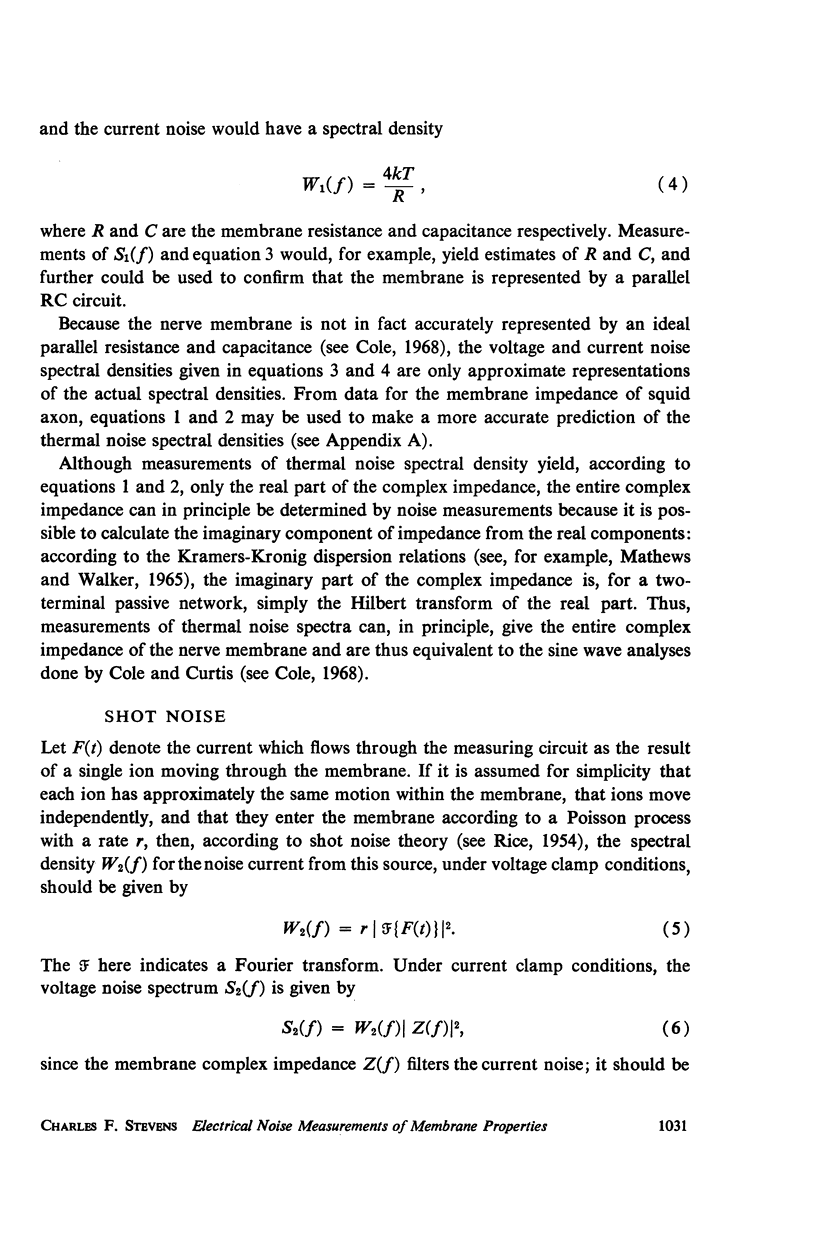
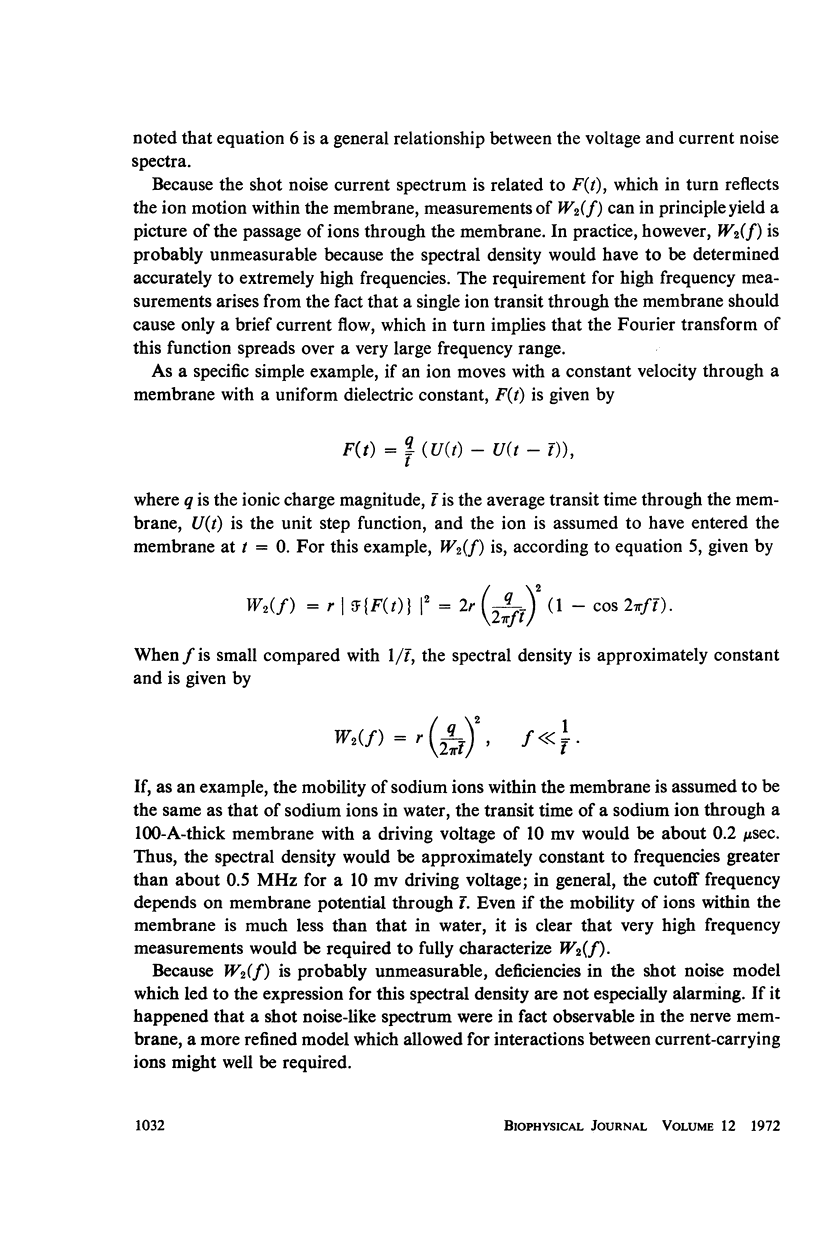
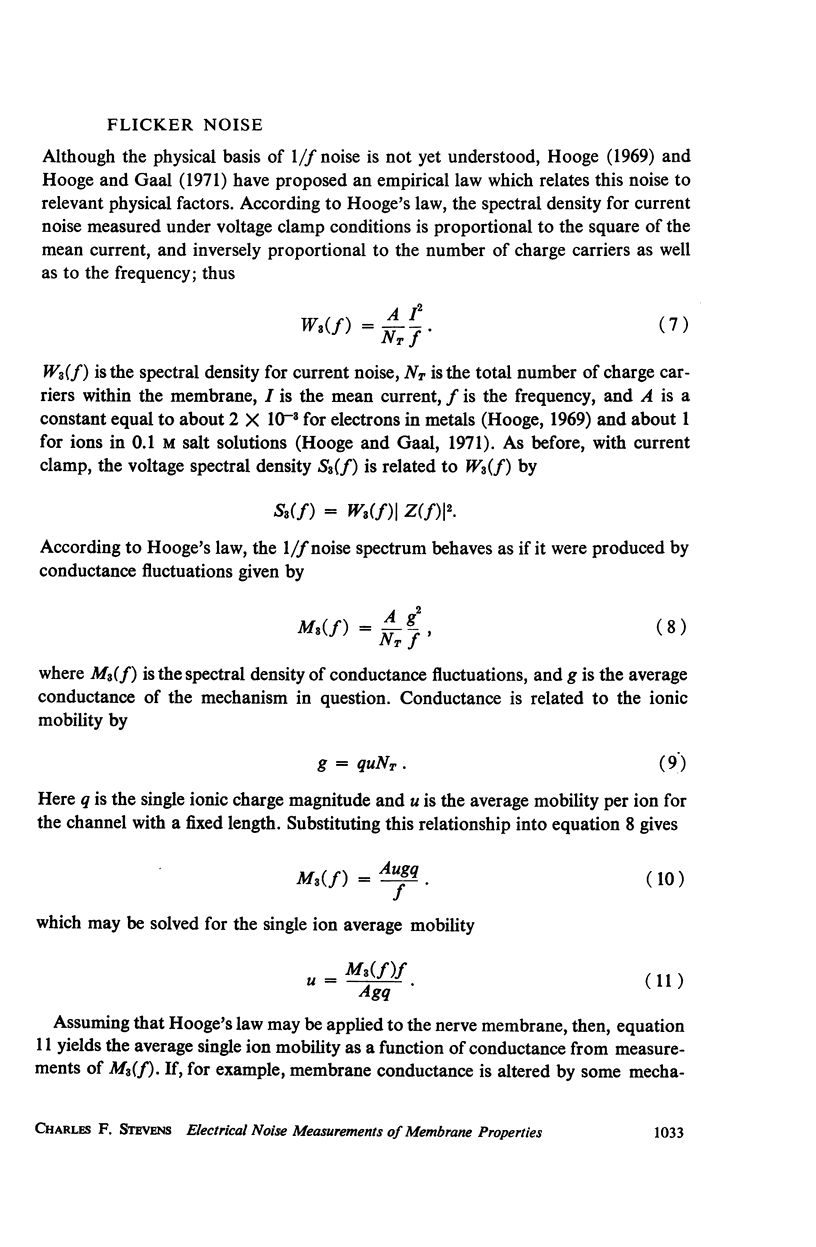
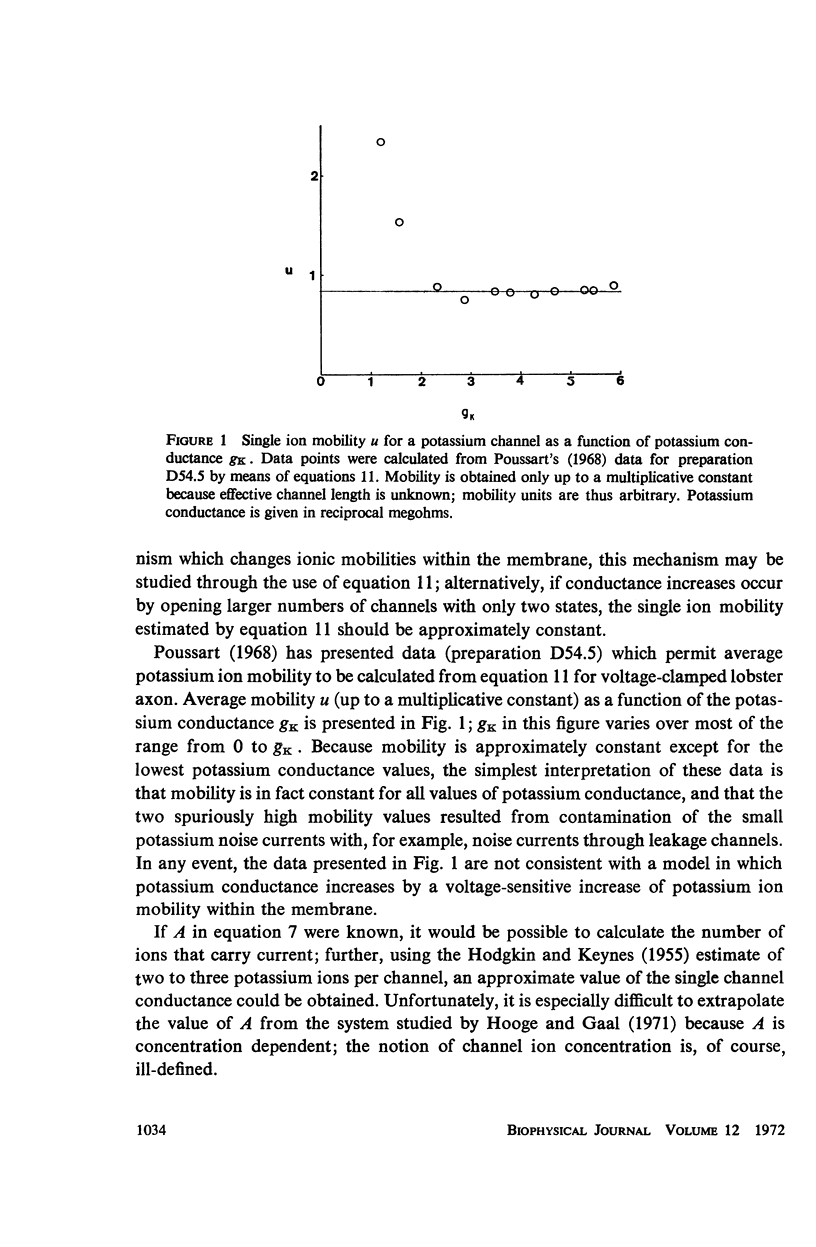
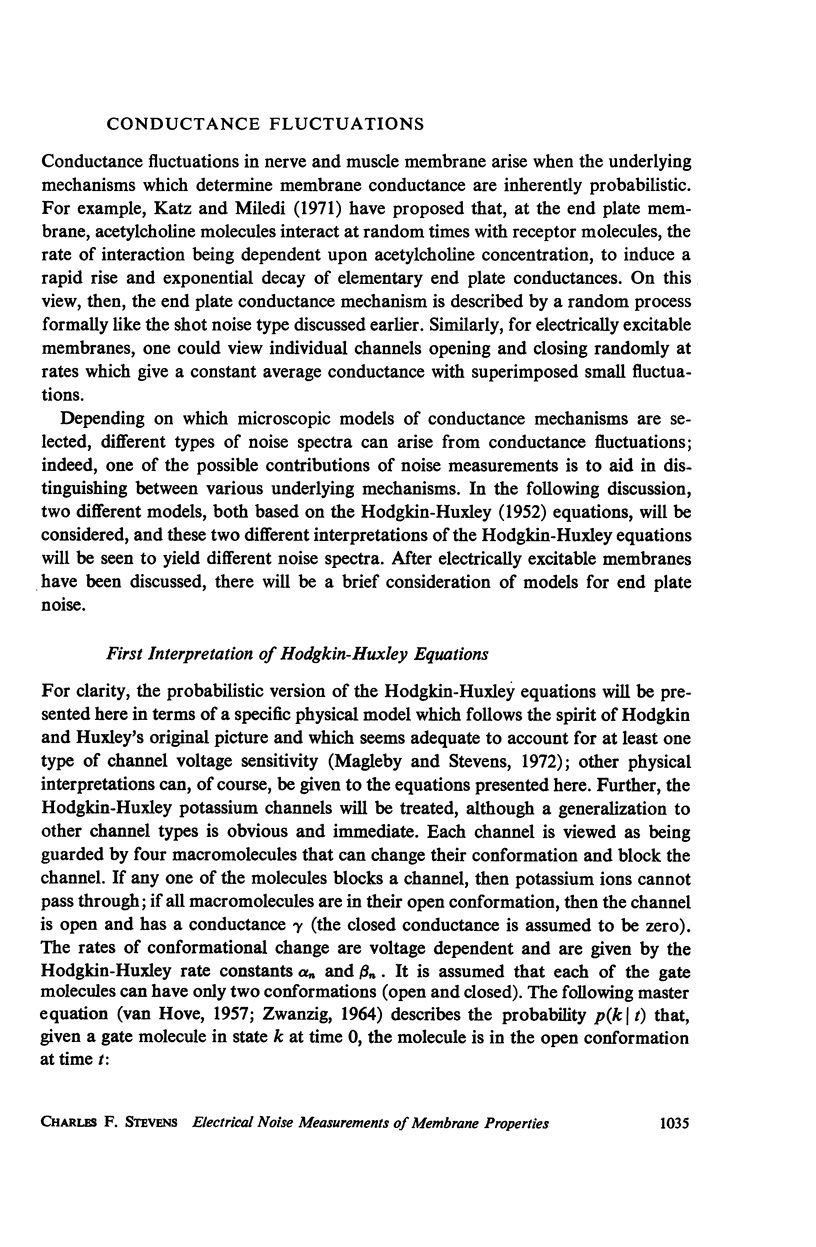
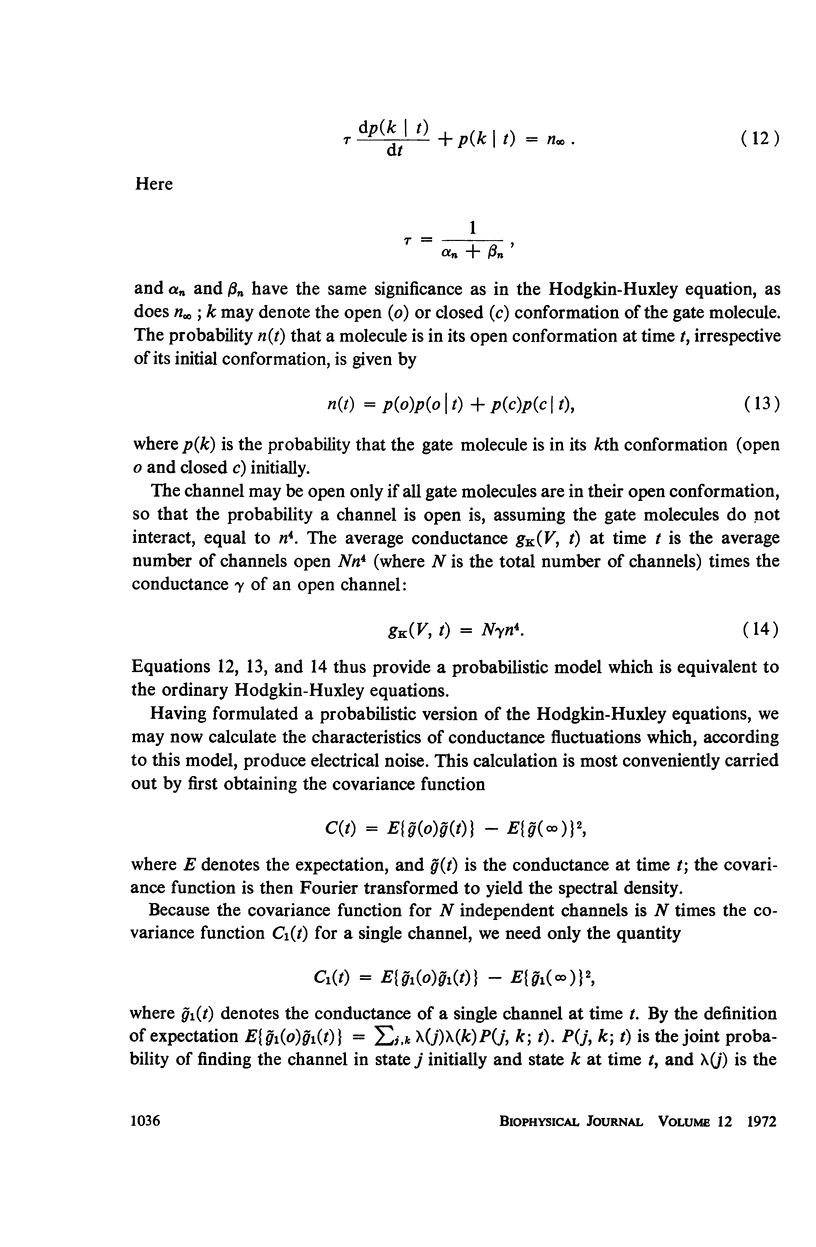
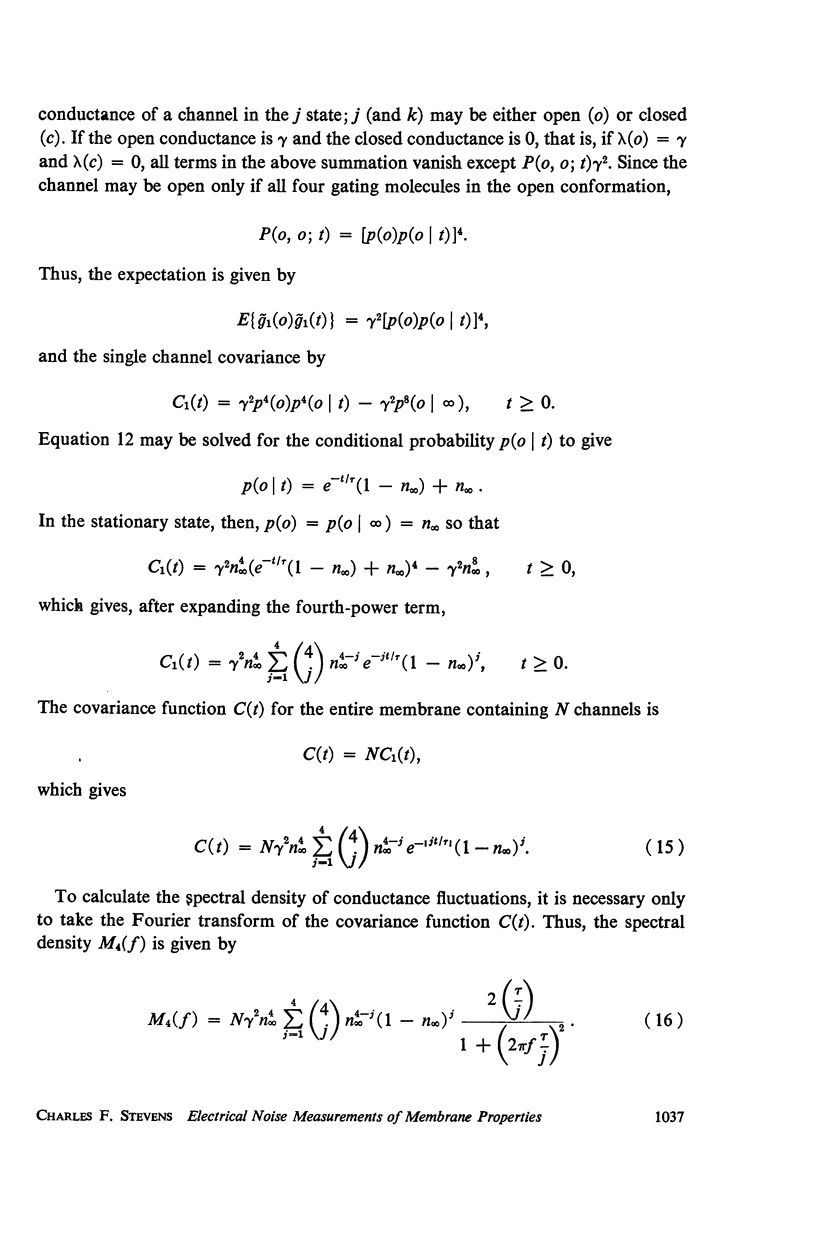
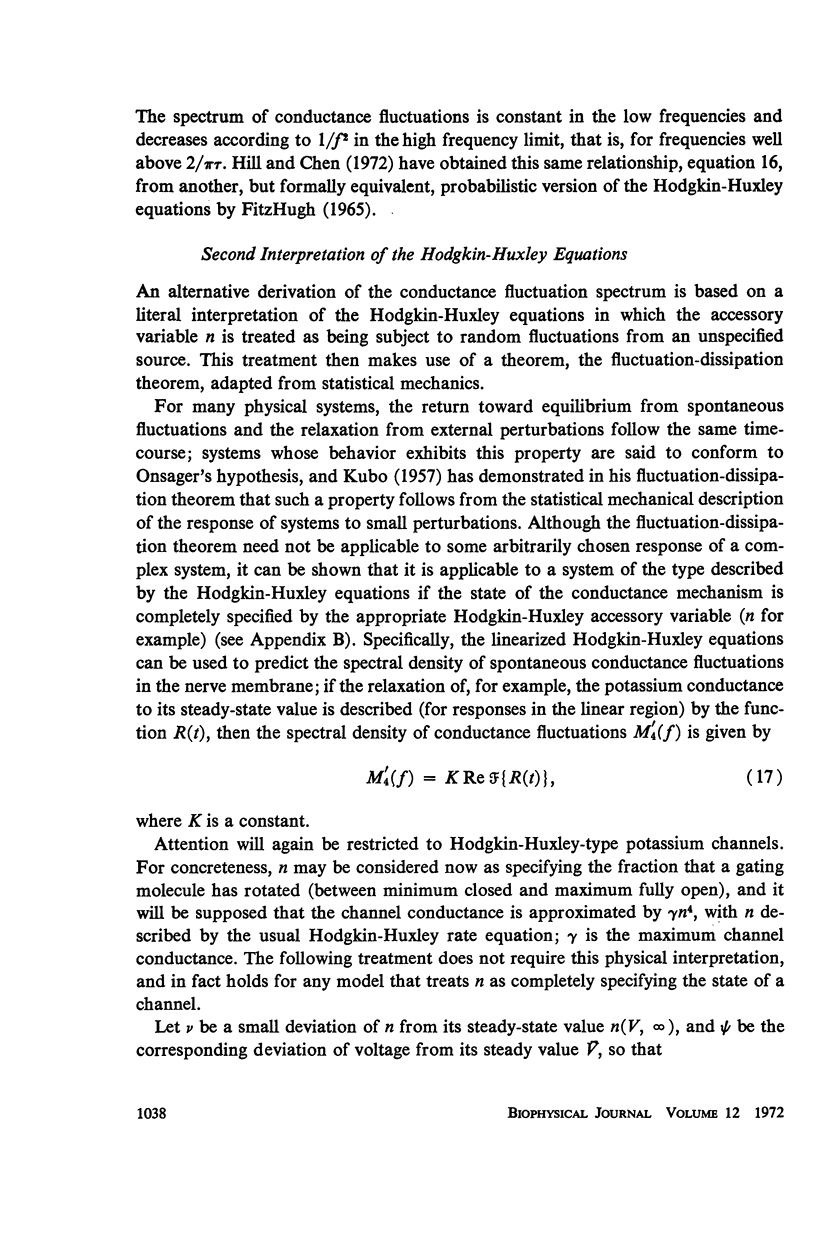
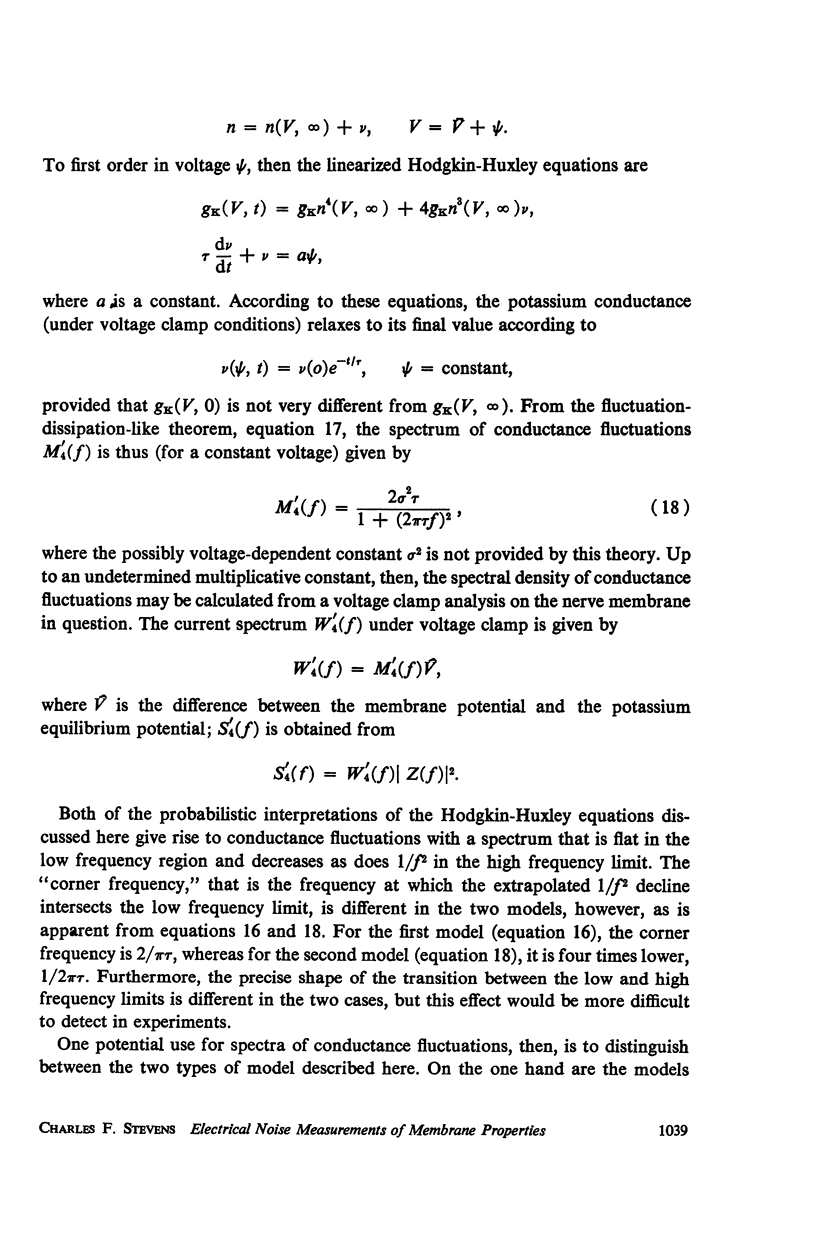
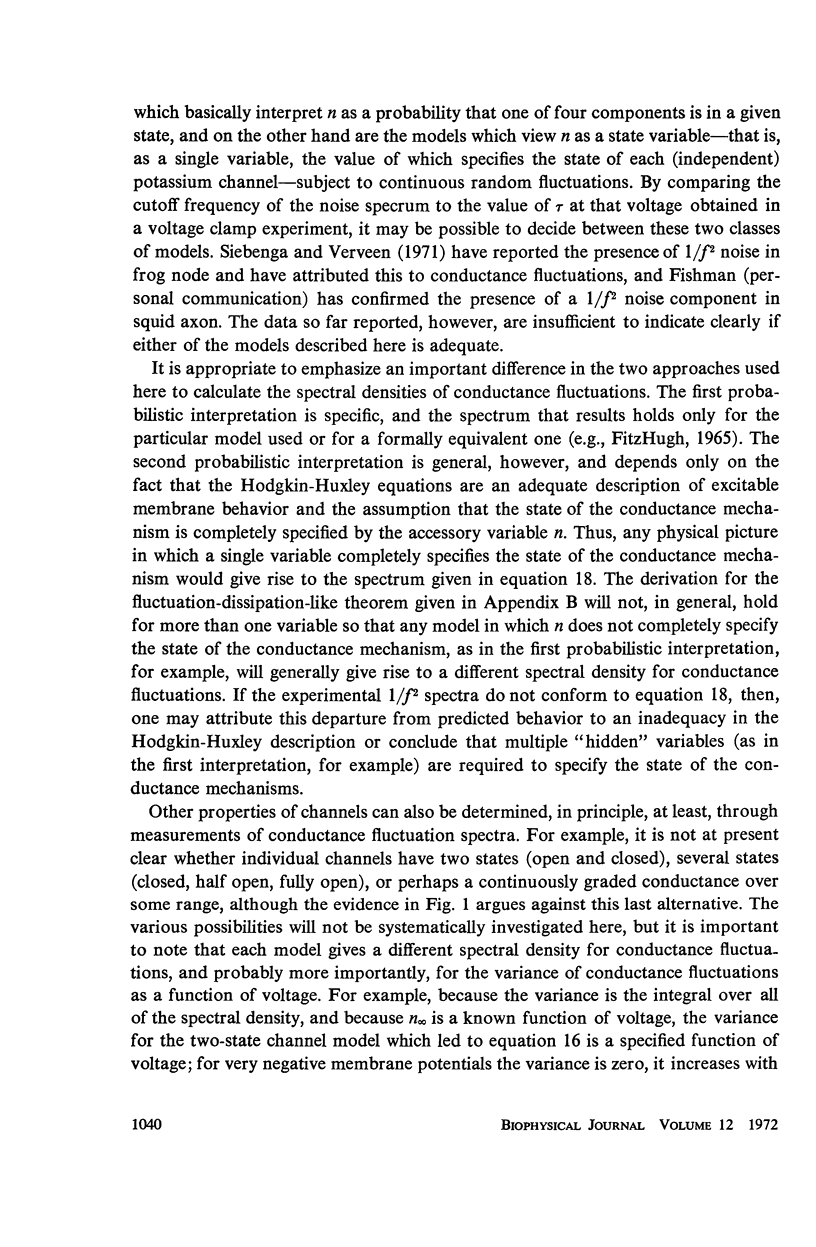
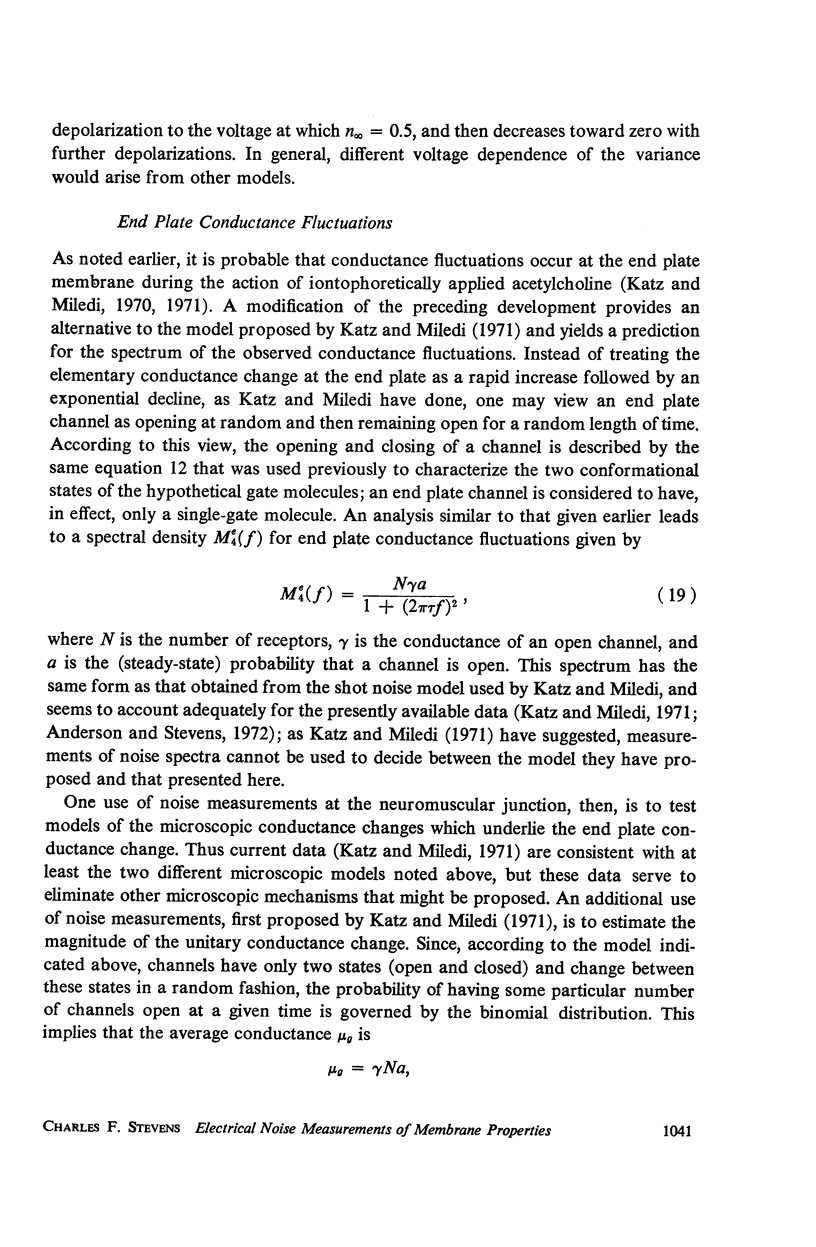
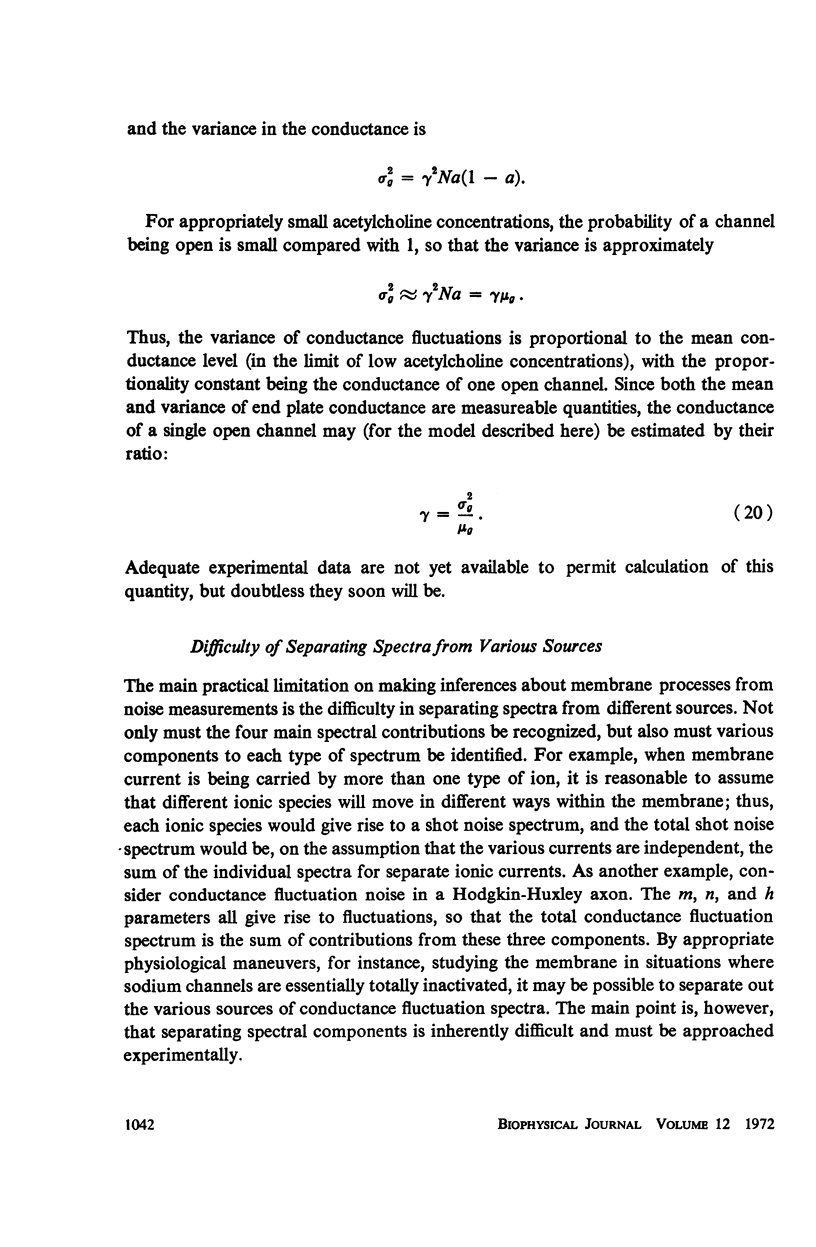
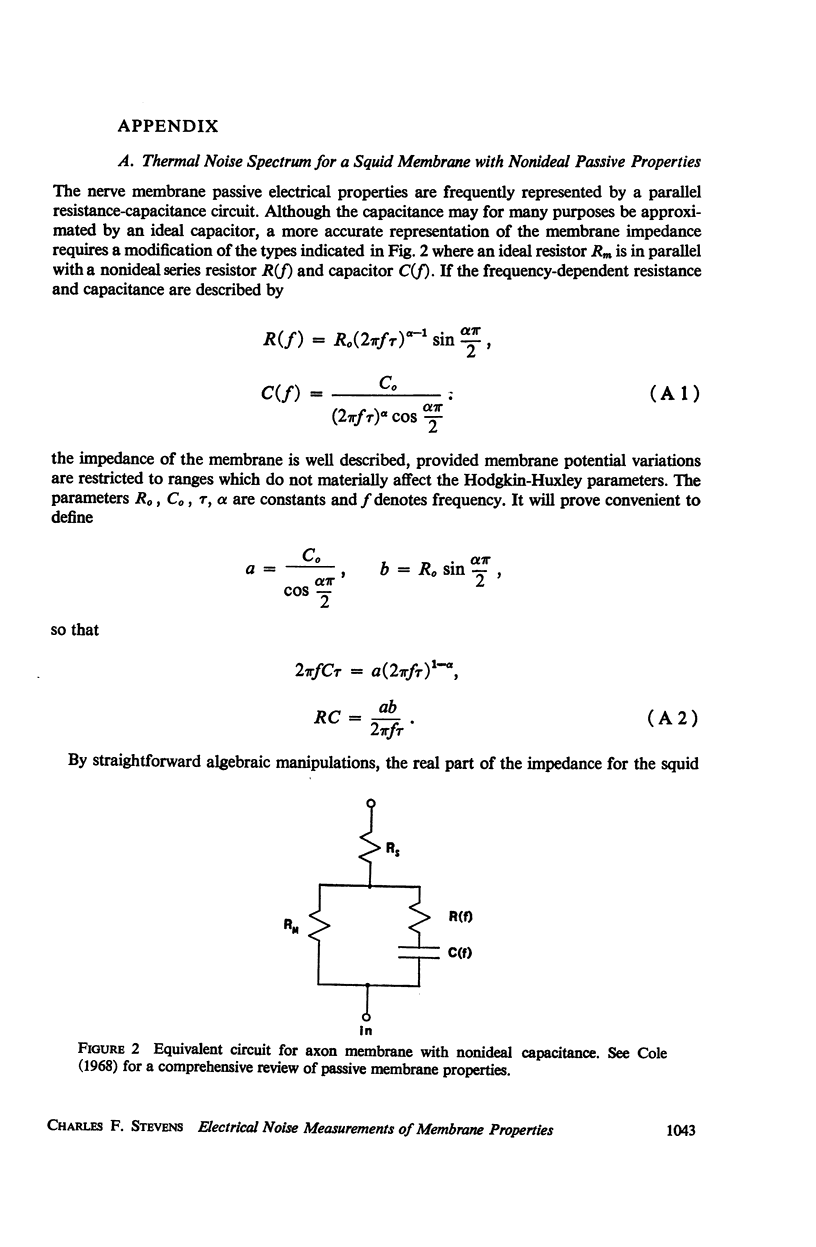
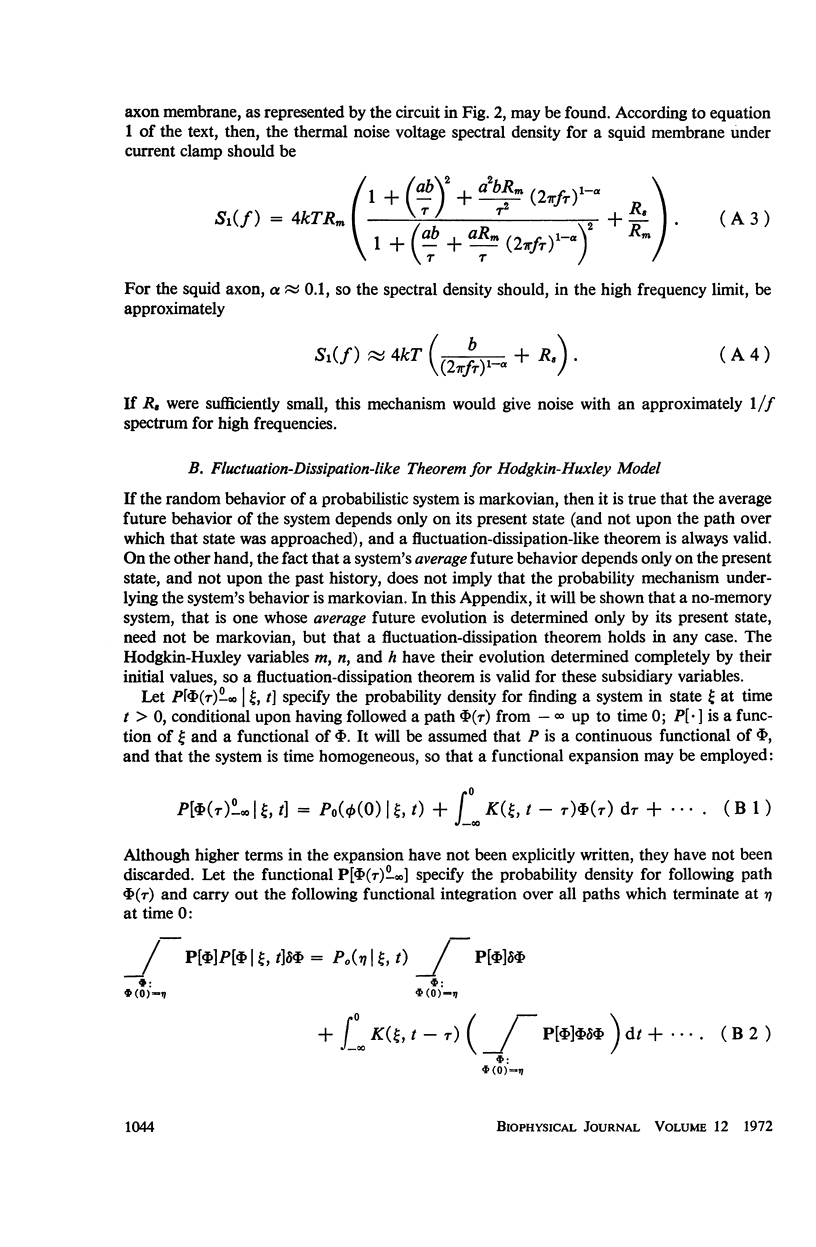
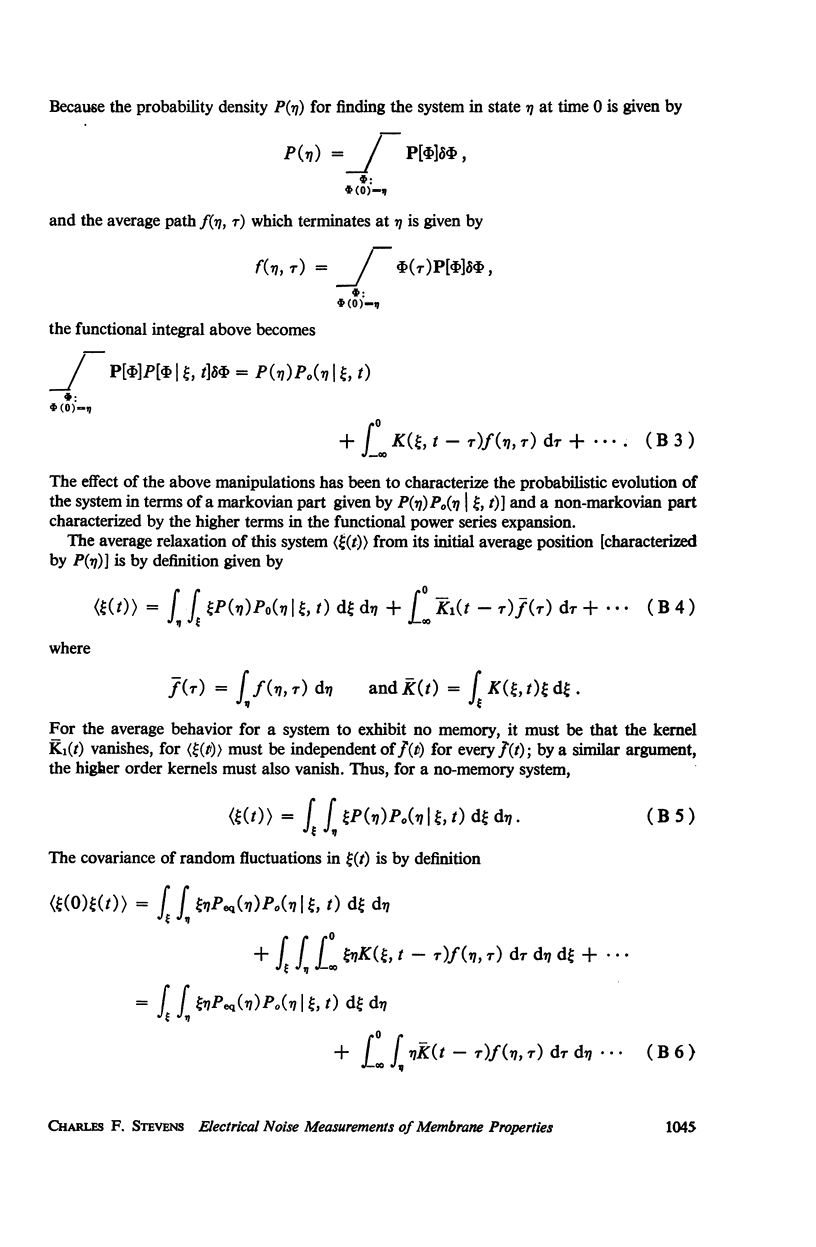
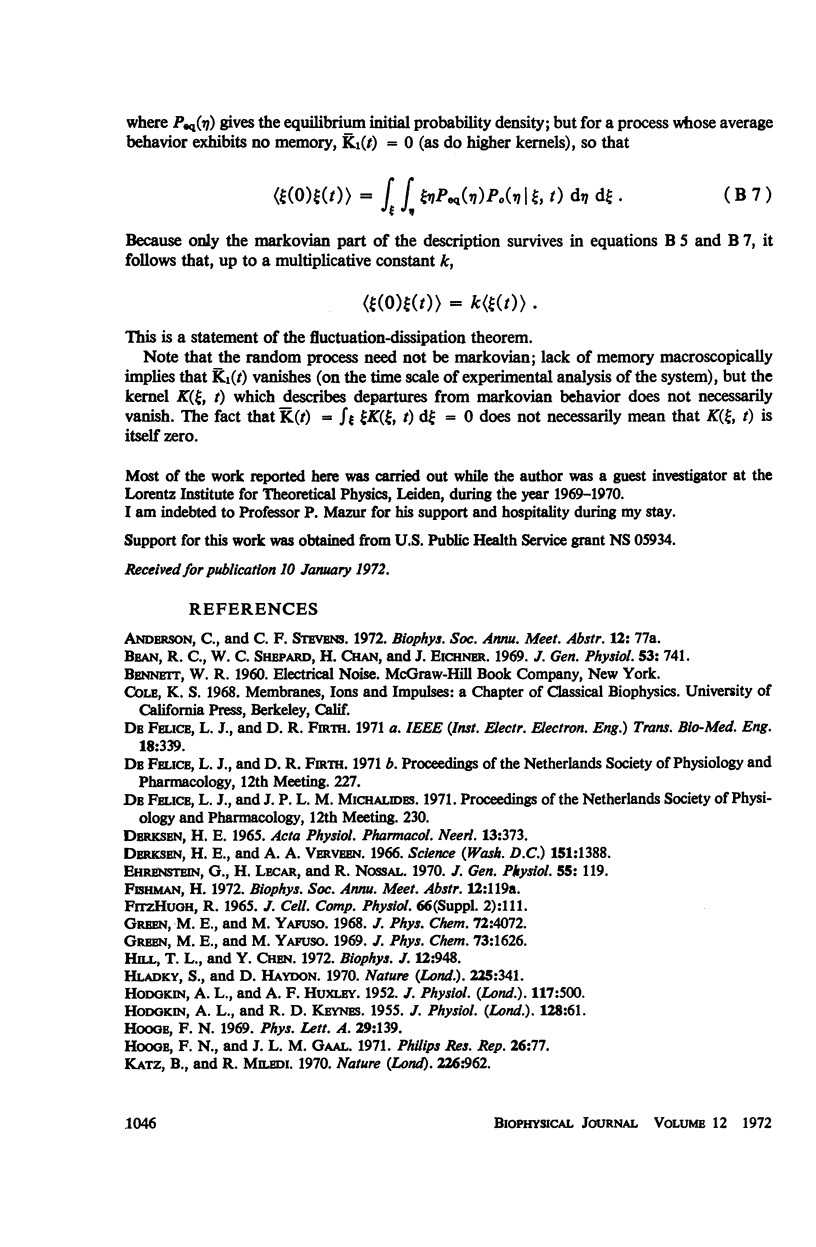
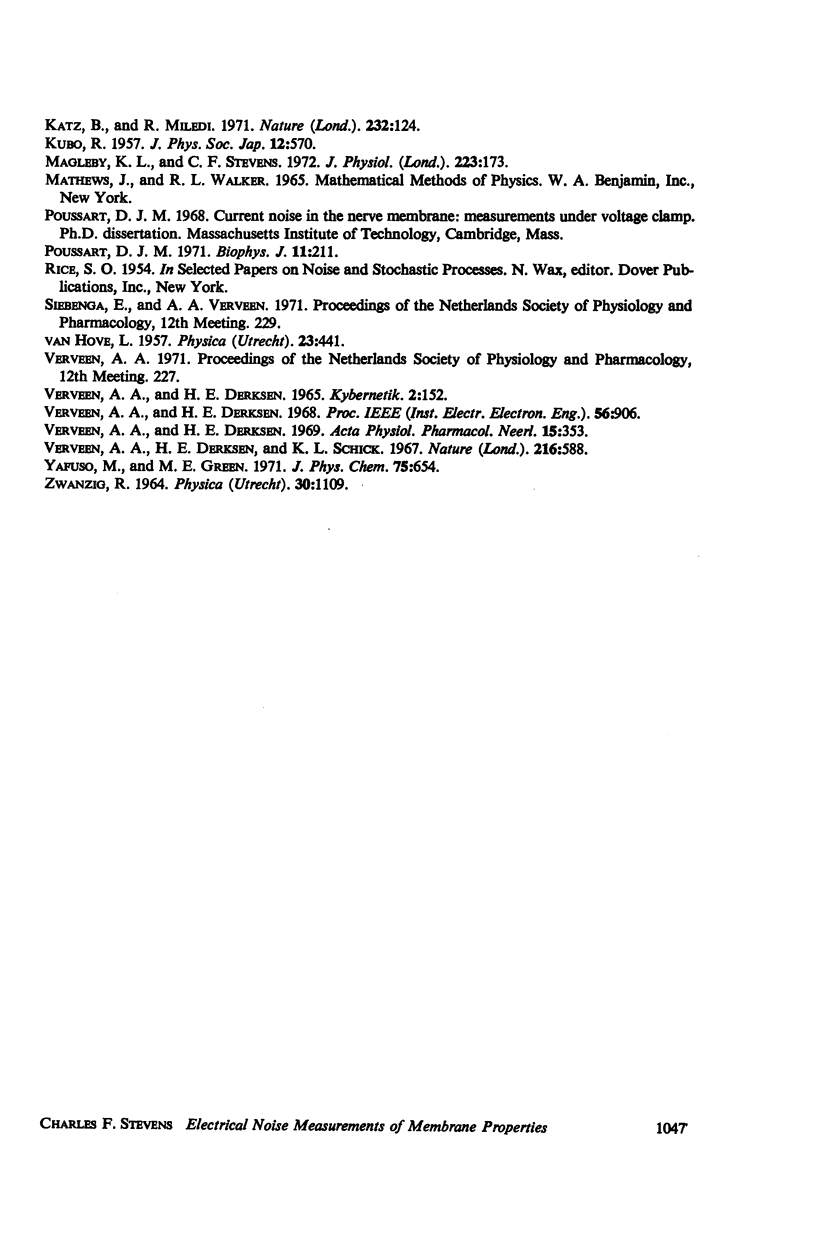
Selected References
These references are in PubMed. This may not be the complete list of references from this article.
- Bean R. C., Shepherd W. C., Chan H., Eichner J. Discrete conductance fluctuations in lipid bilayer protein membranes. J Gen Physiol. 1969 Jun;53(6):741–757. doi: 10.1085/jgp.53.6.741. [DOI] [PMC free article] [PubMed] [Google Scholar]
- Derksen H. E. Axon membrane voltage fluctuations. Acta Physiol Pharmacol Neerl. 1965;13(4):373–466. [PubMed] [Google Scholar]
- Ehrenstein G., Lecar H., Nossal R. The nature of the negative resistance in bimolecular lipid membranes containing excitability-inducing material. J Gen Physiol. 1970 Jan;55(1):119–133. doi: 10.1085/jgp.55.1.119. [DOI] [PMC free article] [PubMed] [Google Scholar]
- HODGKIN A. L., HUXLEY A. F. A quantitative description of membrane current and its application to conduction and excitation in nerve. J Physiol. 1952 Aug;117(4):500–544. doi: 10.1113/jphysiol.1952.sp004764. [DOI] [PMC free article] [PubMed] [Google Scholar]
- Hill T. L., Chen Y. D. On the theory of ion transport across the nerve membrane. IV. Noise from the open-close kinetics of K + channels. Biophys J. 1972 Aug;12(8):948–959. doi: 10.1016/S0006-3495(72)86136-8. [DOI] [PMC free article] [PubMed] [Google Scholar]
- Katz B., Miledi R. Membrane noise produced by acetylcholine. Nature. 1970 Jun 6;226(5249):962–963. doi: 10.1038/226962a0. [DOI] [PubMed] [Google Scholar]
- Magleby K. L., Stevens C. F. A quantitative description of end-plate currents. J Physiol. 1972 May;223(1):173–197. doi: 10.1113/jphysiol.1972.sp009840. [DOI] [PMC free article] [PubMed] [Google Scholar]
- Poussart D. J. Membrane current noise in lobster axon under voltage clamp. Biophys J. 1971 Feb;11(2):211–234. doi: 10.1016/S0006-3495(71)86209-4. [DOI] [PMC free article] [PubMed] [Google Scholar]
- Verveen A. A., Derksen H. E., Schick K. L. Voltage fluctuations of neural membrane. Nature. 1967 Nov 11;216(5115):588–589. doi: 10.1038/216588a0. [DOI] [PubMed] [Google Scholar]


